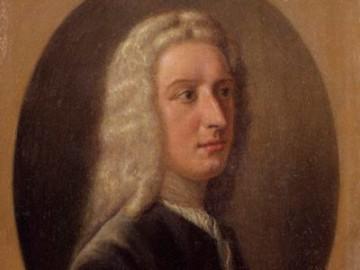
Section Branding
Header Content
Lofty Ideals Are On The Map In Savannah
Primary Content

On February 12th, 1733, James Oglethorpe founded Georgia.
The British general arrived not just with a boat full of colonists but also with a design for the city of Savannah that survives mostly intact 280 years later.
A new book puts a philosophical twist on the founder's plan.
When most people walk around downtown Savannah, they see old homes, churches, monuments and trees.
But through Tom Wilson's eyes, the old historic district looks like a grid of streets and parks in a kind of circuit-board pattern on a map that goes by a specific name.
"Well, in six years as the director of comprehensive planning for Savannah and Chatham County, I repreatedly heard people talking about the Oglethorpe Plan," Wilson says. "And it seemed that everybody had a different idea of what it was."
The Oglethorpe Plan is the Georgia founder's geometric design for where colonists would live, work and gather.
It's a system of streets and open spaces that grew as the city grew.
Today these repeating rectangles and lines give Savannah 22 historic park-like squares.
Wilson wanted to know where the design came from.
But, like a good work of art, the pattern defies easy origination.
"There are a number of theories about the physical design," Wilson says. "It's been written about for many, many decades."
Similar street designs in London, Beijing and Turin all come up in theories.
In his new book on the Oglethorpe Plan, Wilson doesn't settle the physical, what-does-it-look-like question.
But he expands the scholarship on the plan's origins in Enlightenment philosophy, a topic that second graders presumably haven't tackled yet.
Recently, a group of Savannah students stopped by the Massie Heritage Center to learn about James Oglethorpe.
"How are you this morning?" asks the center's Desdie Eberman, dressed as Oglethorpe's interpreter, Mary Musgrove.
"Good!" the children reply.
These students are standing around a giant model of downtown Savannah.
The museum devotes exhibits to Savannah architecture including its founding plan.
Eberman tells the students about the plan's usefulness to Oglethorpe as a military leader.
"What was his No.1 job?" she asks. "Who remembers what I said?"
"To protect South Carolina," a child says.
"Yes, to protect the colony," she says. "So, he had his people go in there and drill like soldiers. And so, they would drill right in the middle of the square."
Wilson explores ideas by John Locke and Isaac Newton, arguing the plan's utopian design also had other goals, like human equality.
"The ideal city was often more than just a physical city," Wilson says. "It was meant for people, meant to bring out the best in humanity."
Oglethorpe's plan gave each household an equal amount of land and highly valued public activities.
It was designed to exist without slaves and not grow too large.
Savannah College of Art and Design School of Building Arts Dean Christian Sotille reviewed Wilson's book.
"The kind of town that you could design if you were going to design an ideal, utopian place usually exists in the realm of theory and books and drawings," Sotille says. "But in the case of Savannah, General Oglethorpe brought that idea to the New World."
Sotille says that Savannah today has a quality of life that's both ready for the next urban century and connected forever to its Enlightenment past.
That's because while the plan changed over time and its humanitarian vision became lost, its bones -- the streets and squares -- remain.
Wilson's book is called "The Oglethorpe Plan: Enlightenment Design in Savannah and Beyond," published by the University of Virginia Press.
A link to the publisher's website is here.
A link to a blog post about the Oglethorpe Plan is here.
Savannah columnist Bill Dawers writes about the Oglethorpe Plan here.
Plan a visit to the Massie Heritage Center to learn more.
Corrections: The broadcast version and an earlier online version of this story referred to English philosopher Thomas Locke. It is John Locke.
Bottom Content

